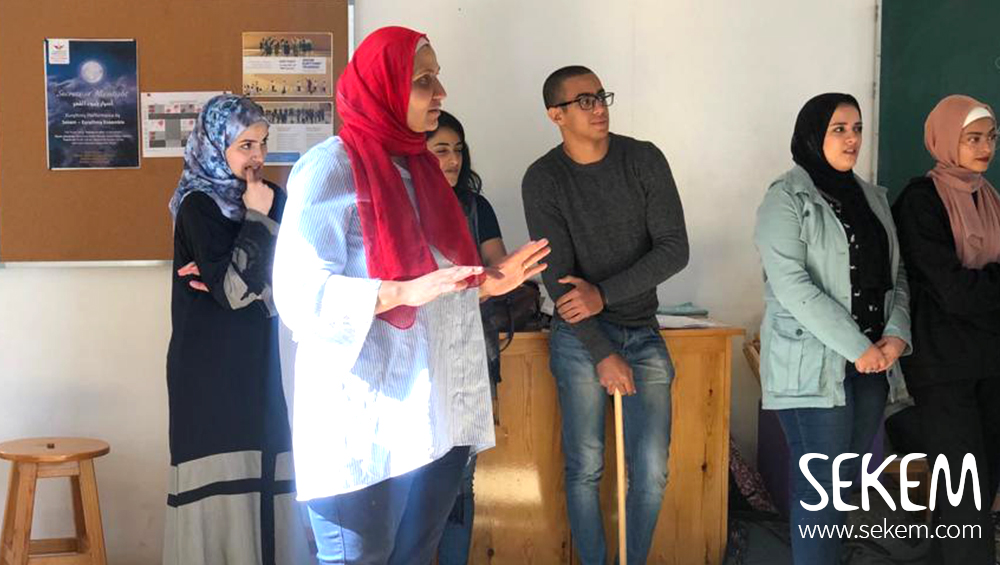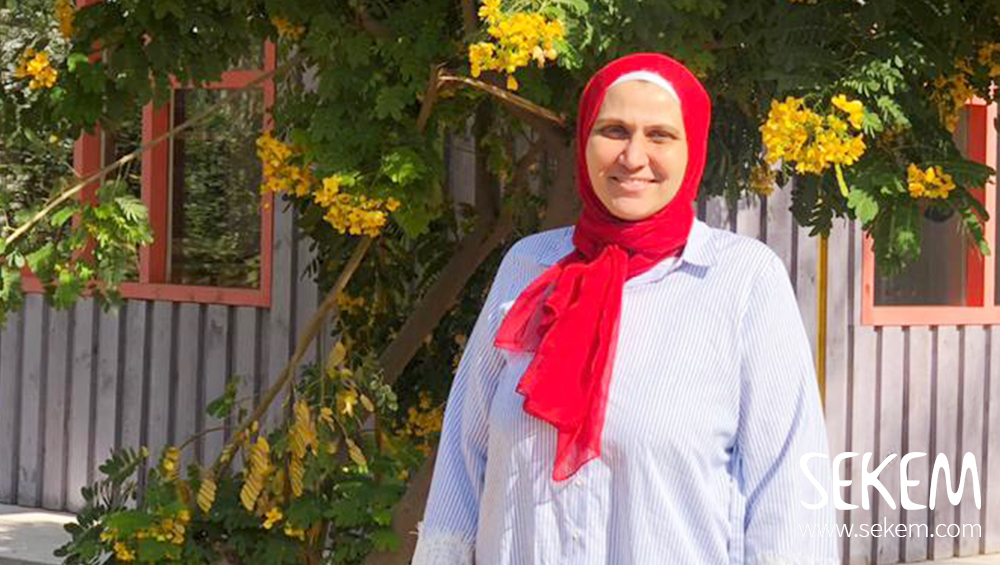Nashwa Ahmed Ibrahim was already an athletics champion at school. But her teachers did not encourage her; at the time of the competition in the national league, her trainer even insisted that she would sit this one out because of the distance to the location of the game. Since then, Nashwa wants to change the conception of sports in the educators’ as well as the students’ mindsets.
When Nashwa graduated from physical education, she started applying for jobs in schools close to her home in Belbeis, where SEKEM is located. Unlike her peers, Nashwa didn’t try to impress her potential employers, instead she looked for a place that shared her vision and that could impress her. “ When I first came to SEKEM, it was obvious that it was a perfect match,” she remembers, and the responsible people at SEKEM seemed to have the same opinion as she was hired on the day.
The new physical education teacher was then invited to attend training from the first week; she later on learned the name for it “Eurythmy”, which is a Greek word and means beautiful rhythm. Eurythmy is concerned with the formation of a harmonious and balanced human thought, feeling and will. And in three weeks, she found herself on stage performing to her colleagues and students. Shortly after her employment, her physical training classes became Eurythmy classes instead. “I didn’t like Eurythmy at first, it was new, strange and I didn’t understand what I was really learning. But that all changed soon” recalls Nashwa. For eight years, every day in the morning, Nashwa attended an hour and a half of training in the morning and an hour after the end of the school day, until she got her Eurythmy diploma. Currently she is even doing her masters with the Alanus University in Germany. “After my first performance, I was certain that it wasn’t for me, but my Eurythmy Instructors Martina Dinkel and Christophe Graf, convinced me to finish the first year and then make an informed decision. By the end of the year, I became certain that Eurythmy is going to be a big part of my life and career,” explains Nashwa Ahmed Ibrahim.
Love within SEKEM
In 2011, Nashwa also found her private happiness at SEKEM, when she tied the knot to her colleague Sherif Moustafa; the exceptional piano player and music teacher at SEKEM School. Not long after, Nashwa and Sherif welcomed their new family member Youssef. The young couple lived in Cairo and travelled every day around 60 kilometers to the SEKEM Farm near Belbeis for work. When Youssef was two years old, this arrangement became too difficult, especially that Sherif was appointed in the Conservatoire. It seemed like there was no other choice for Nashwa but to resign. But Ibrahim Abouleish thought differently. “After I resigned, I received a call from Dr. Ibrahim offering me to work for Heliopolis University in Cairo instead. His proposition was very exciting, but most of all I was touched by his personal care,” tells Nashwa. Two years after, Nashwa and Sherif had her second child, Sophia, and it was again Ibrahim Abouleish who offered her to bring Sophia to work at Heliopolis University.

A new chapter in Heliopolis University
Working at Heliopolis University was a new experience for Nashwa and a challenge: “I wasn’t aware of the challenge of educating University students. I was simply excited to deal with adults, and I thought this would be no different from the trainings I did with my colleagues, but in fact it was far from it,” explains the Eurythmy teacher. “Children are like a white canvas, they are easy to shape and open to all things. Teenagers and adults have been already affected by their surrounding environment and shaped their perceptions. Hence, I realized that the main role is to accompany the students, not to teach them, to give them opportunities to enter into a world of real-life experience and to find solutions to everything that they face.” Nashwa continues giving the example of the tree exercise. When I asked the students to describe a tree, all without exception said that the tree is brown and green, which wasn’t the case, as they were looking at a tree with beige trunk and no leaves. Such an example is eye-opening to the students and from there they start with new a new understanding.”
For Nashwa Ahmed Ibrahim, it became clear that students don’t just need to be taught but more embraced and encouraged. With this understanding, and through Eurythmy, Nashwa feels she can further change conceptions in teaching and learning as she once hoped.
Nadine Greiss
The Hidden Secrets of Life: An Elaborate Eurythmy Collaboration
Culture in the Desert: Eurythmy for Farm Employees

